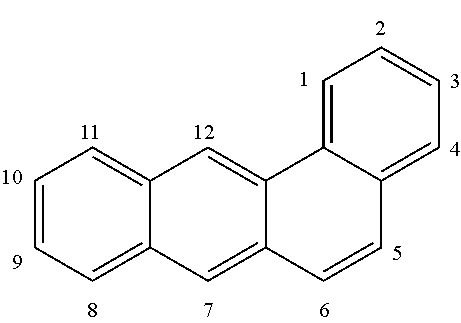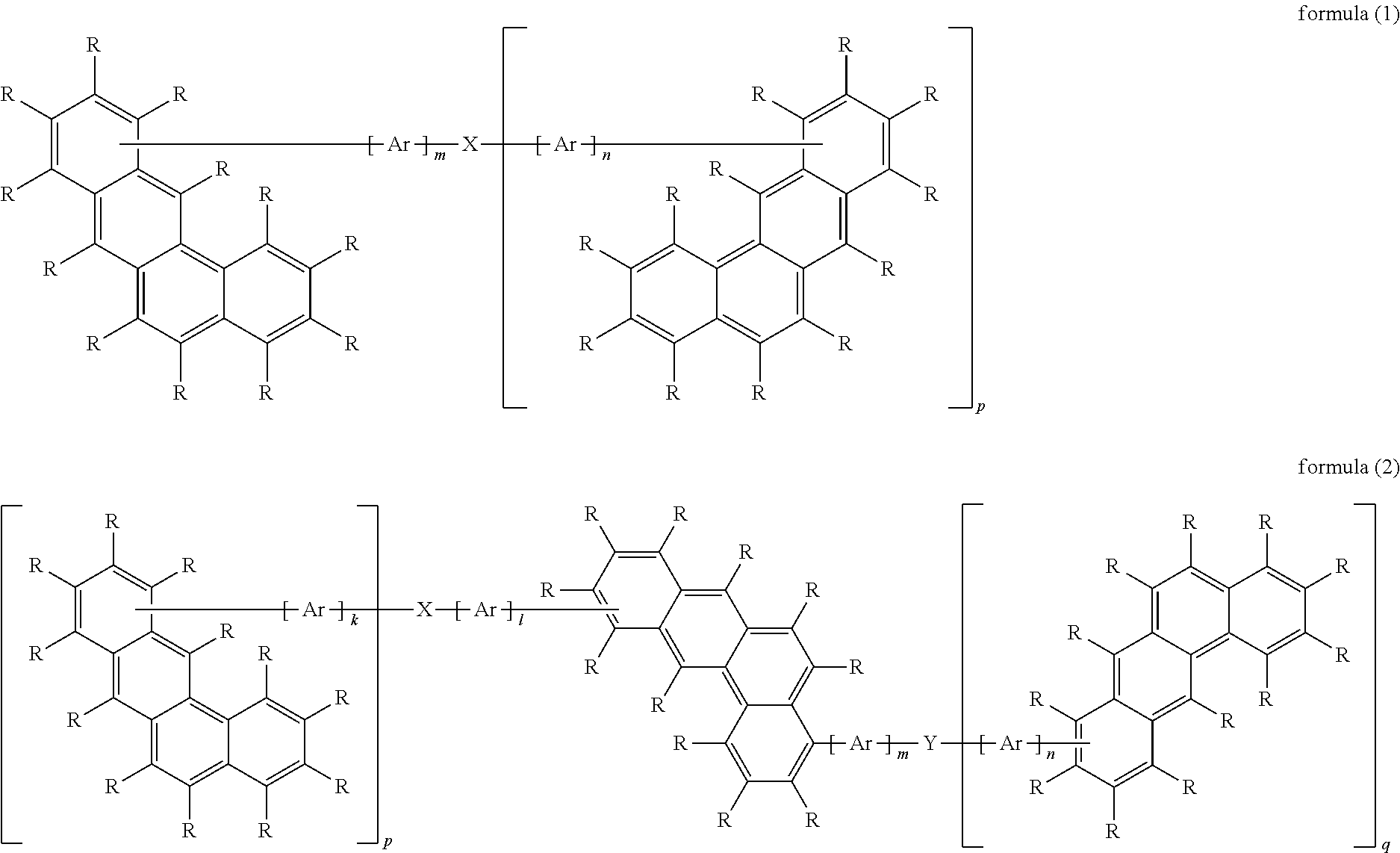Materials for organic electroluminescent devices
a technology of electroluminescent devices and materials, which is applied in the preparation of halogenated hydrocarbons, non-metal conductors, other chemical processes, etc., can solve the problems of insufficient lifetime and inadequate efficiency of blue-emitting organic electroluminescent devices, and compounds are thermally unstable and cannot be evaporated without decomposition
- Summary
- Abstract
- Description
- Claims
- Application Information
AI Technical Summary
Benefits of technology
Problems solved by technology
Method used
Image
Examples
example 1
Synthesis of 8-bromobenz[a]anthracene
[0133]
[0134]200 ml of hypophosphorous acid (50%) are added to a suspension of 75 g (200.2 mmol) of 8-bromobenz[a]anthracene-7,12-dione in 900 ml of glacial acetic acid, and 400 ml of hydroiodic acid (57%) are added dropwise. The reaction mixture is heated under reflux for 16 h. After cooling, the precipitated solid is filtered off with suction and washed with 500 ml of each of water, ethanol / water (1:1, v / v) and ethanol. The crude product is washed by boiling in ethanol and subsequently recrystallised from toluene / glacial acetic acid (1:1, v / v, about 15 ml / g). Drying gives 35.8 g (115.4 mmol) 57.6% of product, purity 99%.
example 2
Synthesis of benz[a]anthracene-8-boronic acid
[0135]
[0136]52 ml (130 mmol) of n-butyllithium (2.5 M in n-hexane) are added dropwise with vigorous stirring at −78° C. to a suspension of 30.7 g (100 mmol) of 8-bromobenz[a]anthracene in 1000 ml of THF, and the mixture is stirred for a further 2 h. 16.7 ml (150 mmol) of trimethyl borate are added to the red solution in one portion with vigorous stirring, the mixture is stirred at −78° C. for a further 30 min., then warmed to room temperature over the course of 3 h, 300 ml of water are added, and the mixture is stirred for 30 min. The organic phase is separated off and evaporated to dryness in vacuo. The solid is taken up in 100 ml of n-hexane, filtered off with suction, washed once with 100 ml of hexane and dried in vacuo. Yield: 23.7 g (87 mmol), 87%, purity about 90% (NMR) of boronic acid, with varying amounts of boronic anhydride and borinic acid. The boronic acid can be used in this form without further purification.
[0137]The corresp...
example 5
Synthesis of 9-(naphth-2-yl)-10-(benz[a]anthracen-8-yl)-anthracene
[0139]
[0140]913 mg (3 mmol) of tri-o-tolylphosphine and then 112 mg (0.5 mmol) of palladium(II) acetate are added to a well-stirred suspension of 19.2 g (50 mmol) of 9-bromo-10-(2-naphthyl)anthracene, 15.0 g (55 mmol) of benz[a]anthracene-8-boronic acid, 25.5 g (120 mmol) of tripotassium phosphate in a mixture of 300 ml of toluene, 100 ml of dioxane and 400 ml of water, and the mixture is subsequently heated under reflux for 16 h. After cooling, the precipitated solid is filtered off with suction, washed three times with 50 ml of toluene, three times with 50 ml of ethanol:water (1:1, v:v) and three times with 100 ml of ethanol, recrystallised three times from chlorobenzene (about 10 ml / g) and subsequently sublimed twice (p=5×10−5 mbar, T=340° C.). Yield: 14.8 g (27.5 mmol), 55.0%, purity 99.9% (HPLC).
[0141]The following compounds according to the invention are obtained analogously to Example 5 from the corresponding b...
PUM
| Property | Measurement | Unit |
|---|---|---|
| Fraction | aaaaa | aaaaa |
| Fraction | aaaaa | aaaaa |
| Fraction | aaaaa | aaaaa |
Abstract
Description
Claims
Application Information
 Login to View More
Login to View More - R&D
- Intellectual Property
- Life Sciences
- Materials
- Tech Scout
- Unparalleled Data Quality
- Higher Quality Content
- 60% Fewer Hallucinations
Browse by: Latest US Patents, China's latest patents, Technical Efficacy Thesaurus, Application Domain, Technology Topic, Popular Technical Reports.
© 2025 PatSnap. All rights reserved.Legal|Privacy policy|Modern Slavery Act Transparency Statement|Sitemap|About US| Contact US: help@patsnap.com



